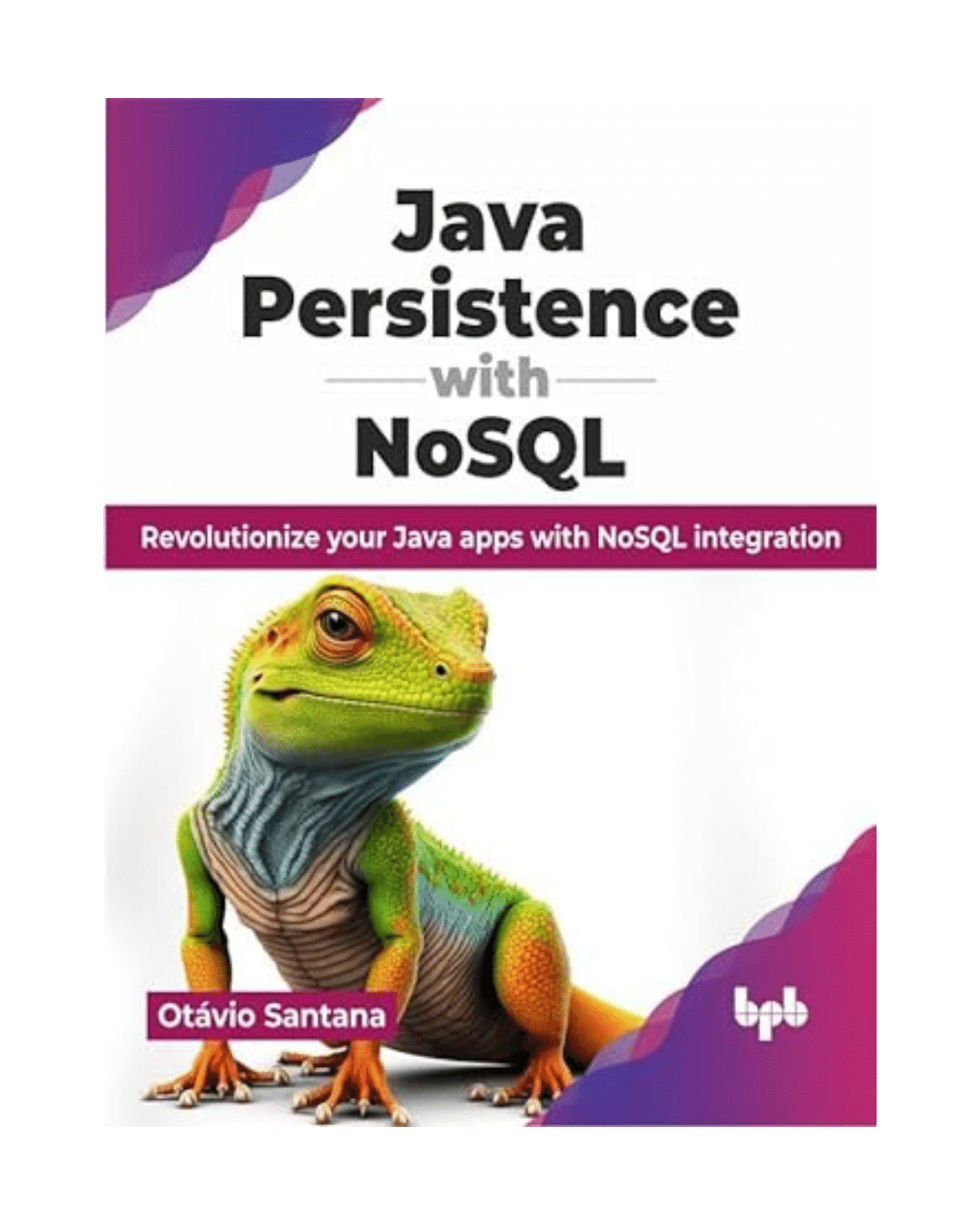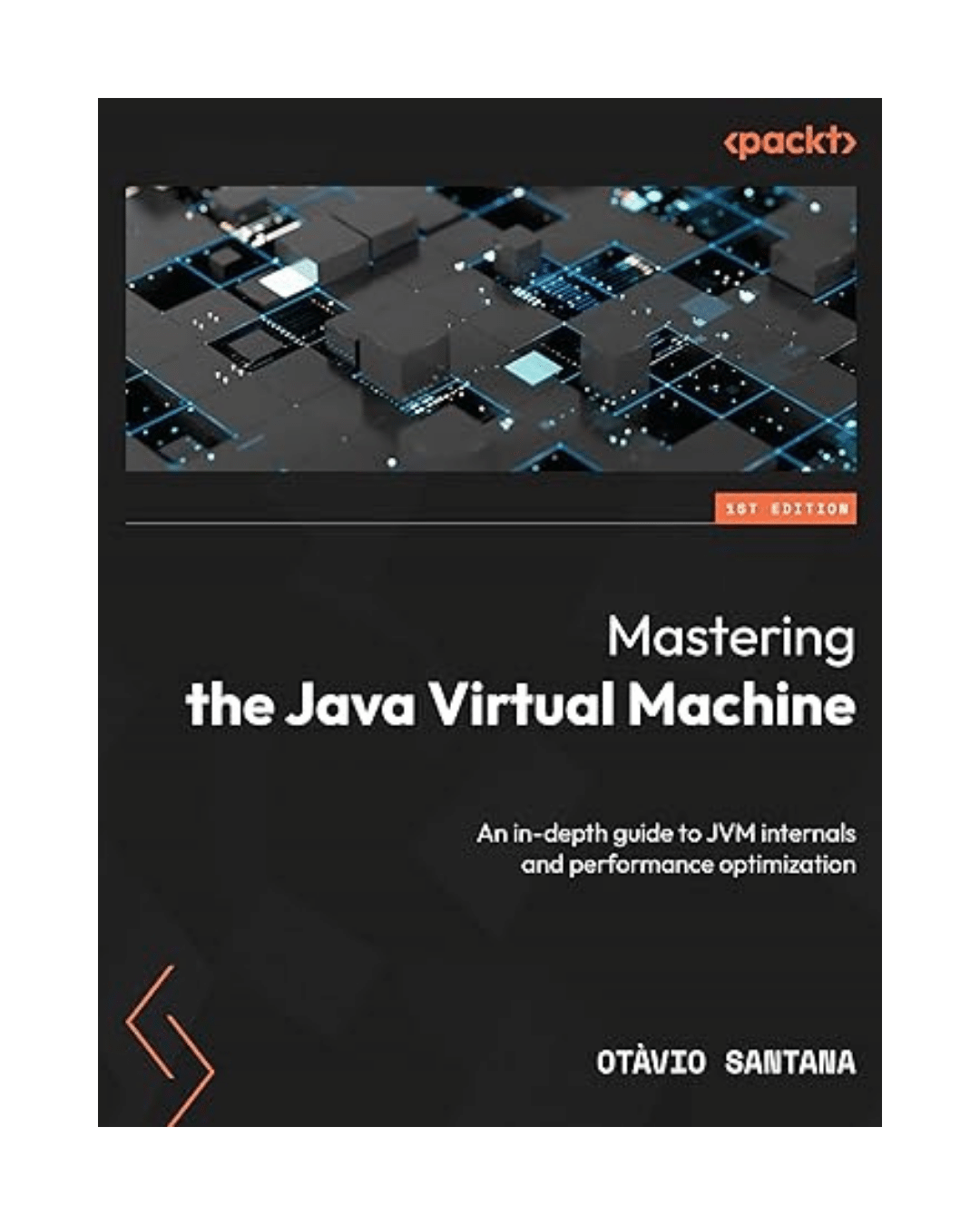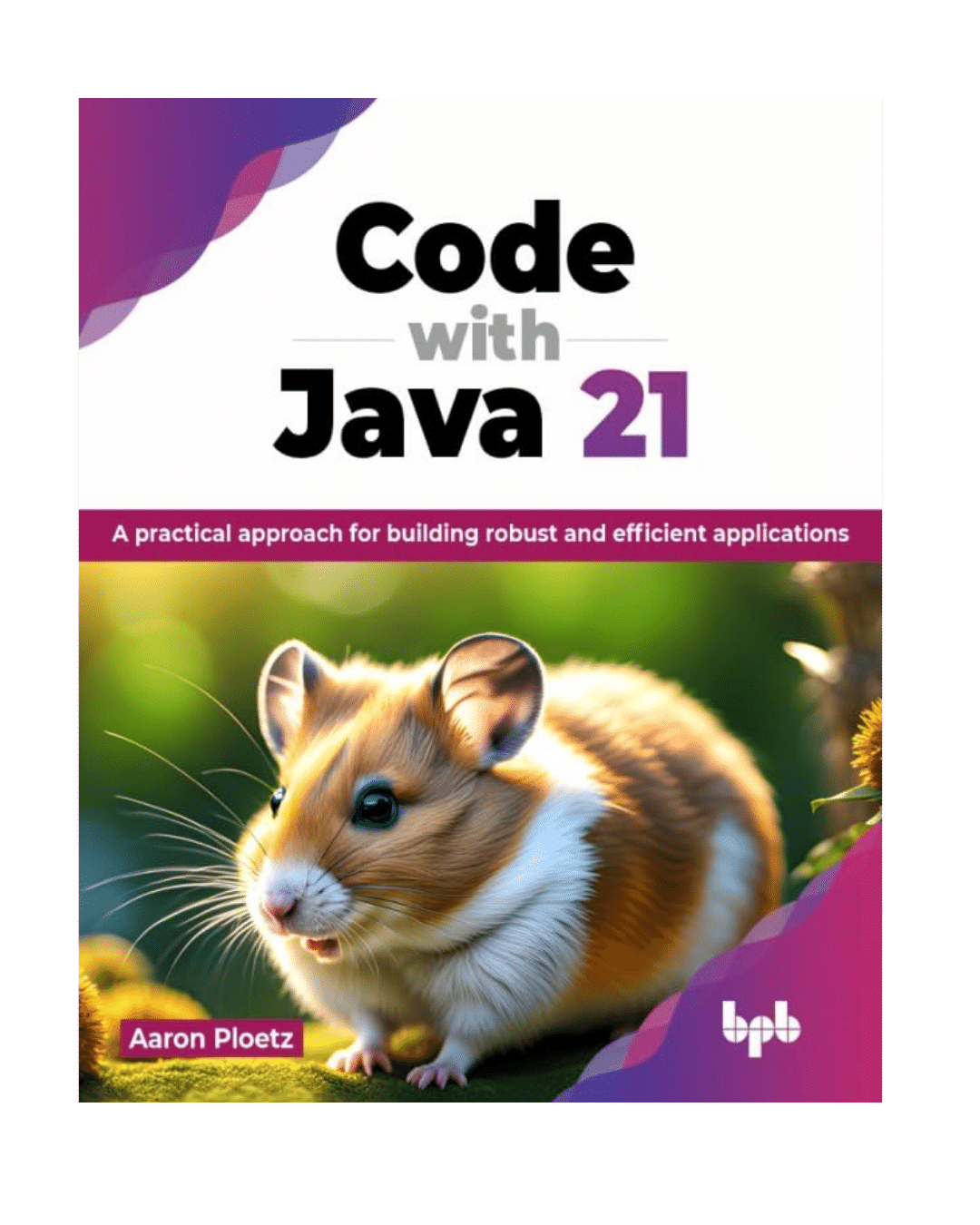
About the book
Java Persistence with NoSQL is a comprehensive guide that offers a unique blend of theoretical knowledge and practical implementation, making it an invaluable resource for those seeking to excel in their roles.
The book is divided into four parts, covering essential NoSQL concepts, Java principles, Jakarta EE integration, and the integration of NoSQL databases into enterprise architectures. Readers will explore NoSQL databases, comparing their strengths and use cases. They will then master Java coding principles and design patterns necessary for effective NoSQL integration. The book also discusses the latest Jakarta EE specifications, enhancing readers’ understanding of Jakarta’s role in data storage and retrieval. Finally, readers will learn to implement various NoSQL databases into enterprise-grade solutions, ensuring security, high availability, and fault tolerance.
With hands-on exercises, real-world examples, and best practices, this book equips professionals with the skills and knowledge needed to excel in building robust and scalable Java applications using NoSQL databases.

About the book
Mastering the Java Virtual Machine is a comprehensive guide that will take you into the heart of Java programming, guiding you through the intricate workings of the Java Virtual Machine (JVM) and equipping you with essential skills to become a proficient Java developer.
You’ll start by understanding the JVM, exploring its architecture and how it executes Java code. Through detailed explanations and real-world examples, you’ll gain a deep understanding of JVM internals, enabling you to write efficient and optimized Java applications.
As you progress, you’ll delve into memory management and execution, unraveling the complexities of heap and stack management, garbage collection, and memory profiling. You’ll learn how memory is allocated and reclaimed in the JVM, as well as how to optimize memory usage and identify performance bottlenecks in your applications. With this knowledge, you’ll be able to create Java programs that are not only robust but also highly performant.
By the end of this book, you’ll have the skills needed to excel in Java programming, writing efficient, maintainable code.

Code with Java 21: A practical approach for building robust and efficient applications
About the book
Code with Java 21 is a practical journey through one of the world’s most prolific computer programming languages. It is meant to help readers build up their knowledge of common Java programming constructs, data structures, and engineering paradigms. Filled with real-world examples, this book aims to build the reader’s understanding of building software applications with Java.
Seasoned Java developers should buckle in as this book takes a hands-on approach to leveraging popular Java frameworks like Spring and Vaadin to build rich, feature-filled web applications. It also covers building powerful data-driven applications on enterprise-grade databases like PostgreSQL and Apache Cassandra®. This book will also show how to use Java to animate with colorful graphics and even build a simple arcade game.
Around the world, Java runs on billions of devices. After its inception nearly 30 years ago, it remains one of the most popular and sought-after programming languages. Whether you are an aspiring computer hobbyist or want to gain a valuable skill en route to a lucrative career as a software developer, Code with Java 21 should be every developer’s go-to reference for building Java applications.

Persistence Best Practices for Java Applications: Effective strategies for distributed cloud-native applications and data-driven modernization.
About the book
Having a solid software architecture breathes life into tech solutions. Critical decisions must be made in the early stages of an application’s development, such as whether to go for microservices, a monolithic architecture, the event-driven approach, or containerization. In Java contexts, frameworks and runtimes also need to be defined. But one aspect is often overlooked – the persistence layer – which plays a vital role similar to data stores in modern cloud-native solutions. A holistic understanding of best practices, technologies, and existing approaches is crucial to optimize applications and data stores.
This book presents well-established patterns and standards that can be used in Java solutions, with valuable insights into the pros and cons of trending technologies and frameworks used in cloud-native microservices, alongside good Java coding practices. As you progress, you’ll confront the challenges of cloud adoption head-on, particularly those tied to the growing need for cost reduction through stack modernization. Within these pages, you’ll discover application modernization strategies and learn how enterprise data integration patterns and event-driven architectures enable smooth modernization processes with low-to-zero impact on the existing legacy stack.

Framework Java para bases de datos NoSQL
About the book
It is a practical book for developing applications with NoSQL databases using jmoordbcore. You will find examples of applications created with Jakarta EE and Microprofile in each chapter. You will learn about Testing, Software Quality among other topics.
It is focused on developers who want to learn how to create microservices with NoSQL databases.

Mastering Microservices with MicroProfile and Payara in the Cloud
About the book
Microservices is a software architecture where the systems are a collection of several independent services that are centered around a single business domain. Like any architectural decision, it has its advantages and disadvantages.
We’ve collaborated with software, engineering, and data company xgeeks to tell you more about the technology!
Download our joint guide to discover the most common errors and issues using microservices. We also describe how it can work with Jakarta EE – largely through MicroProfile, the set of APIs designed to be used with Jakarta EE to provide functionality that augments its microservice capabilities. You can also discover how Payara Platform will help you develop supported, stable microservices architecture.

Best Practices in Software Architecture in the Cloud era
About the book
In this book, you will learn about concepts that are part of the lives of senior professionals in the software development and architecture careers. All this with content that comes from the application of technologies, concepts and cultures such as Effective Java, Clean Code, Domain-Driven Design, Clean Architecture, and Building Microservices.

Apache Cassandra Horizontal scalability for Java applications
About the book
In the competitive world of technology, millisecond improvements in performance can make all the difference for your customers. From this need, several paradigms and frameworks emerged, demanding, at the same time, a good and fast performance in the persistence of information. Apache Cassandra was born in this scenario, the NoSQL database, elastic, fault-tolerant, and with a high degree of performance. Cassandra is a non-relational database originated by Facebook. Today, it is an open-source project within the Apache Foundation with successes in the world’s largest companies, such as Netflix, GitHub, eBay, among others.
In this book, Otávio Santana discusses Cassandra, its concepts, and its applicability with Java. After introducing non-relational databases, you will see concepts such as hierarchy, reading, writing, how they work on the node, and their orchestration within a Cluster. The practical operation of the communication language Cassandra Query Language or CQL will be presented, with modeling tips and mapping frameworks. DataStax Mapper, Spring Data Cassandra, Hibernate OGM Cassandra, and Eclipse JNoSQL.

Building Modern Web Applications With JakartaEE, NoSQL Databases and Microservices
About the book
For many years, Java EE has been an important platform for mission-critical enterprise applications. To accelerate the development of enterprise applications for a cloud-native world, leading software vendors collaborated to transfer Java EE technologies to the Eclipse Foundation, where they will evolve under the Jakarta EE brand.
This book will be your comprehensive guide to creating Jakarta EE applications and microservices with Microprofile. The book begins with an introduction to Jakarta EE and quickly goes on to teach you about the various databases and their advantages. After this, you will explore the JNoSQL and Jmoordb frameworks to understand how to build Jakarta EE applications with NoSQL databases. Moving forward, you’ll explore Eclipse MicroProfile and see how it helps build microservices with Java. Also, you will learn about various development applications such as Java Server Faces, Eclipse Krazos, PrimeFaces, Vaadin, and understand how to integrate them with your backend. Towards the end, you will learn about security, testing, and understanding continuous integration.

Payara Platform and PaaS with Platform.sh
About the book
As a Platform as a Service, or PaaS, Platform.sh automatically manages everything your application needs in order to run. That means you can, and should, view your infrastructure needs as part of your application, and version-control it as part of your application.
Platform.sh is a PaaS built especially for continuous deployment with the goal of making it easier to move your project to cloud-computing to deploy anywhere and anytime. Using the Maven Archetype, you can create a REST project with Payara Micro and move the project to Platform.sh.

Apache Cassandra Escalabilidade horizontal para aplicações Java
About the book
In the crowded world of technology, millisecond improvements in performance can make all the difference for your customers. From this need, several paradigms and frameworks emerged, demanding at the same time good and fast performance in information persistence. In this scenario, Apache Cassandra was born, the NoSQL database, elastic, fault tolerant and with a high degree of performance. Cassandra is a non-relational database originated by Facebook, and today it is an open source project within the Apache Foundation with success stories in the largest companies in the world, such as Netflix, GitHub, eBay, among others.
In this book, Otávio Santana discusses Cassandra, its concepts and its applicability with Java. After an introduction to non-relational databases, you will see concepts such as hierarchy, reading and writing, their operation on the node and their orchestration within a Cluster. The practical functioning of the Cassandra Query Language or CQL communication language will be presented, with modeling tips and mapping frameworks, including DataStax Mapper, Spring Data Cassandra, Hibernate OGM Cassandra and Eclipse JNoSQL.

Java Money-API: Learn the proper and efficient way to work and represent monetary and money values with Java.
About the book
Most software projects deal with monetary values. Primitive wrappers like Float and Double or richer types like BigDecimal are sometimes used to represent monetary values. On the other hand, we often develop or use third-party APIs that offer abstraction for representing money. So clearly it’s a very common problem that requires a common standard.
The JSR 354 (Money and Currency API) is a work towards defining an API that provides abstraction for money and currency.

Imergindo na JVM
About the book
Certamente o Java é atualmente uma das linguagens mais usadas e uma das mais populares no mundo, sendo que o seu maior diferencial não está na linguagem e sim na JVM (Máquina virtual Java). Conheça um pouco mais sobre esse motor, seu funcionamento e sua arquitetura para tirar melhor proveito dela em suas aplicações, além de conhecer um pouco sobre a implementação de referência e open source da JVM, o OpenJDK.

OpenJDK CookBook
About the book
OpenJDK is one of the most widely used open source implementations of the Java platform. It is used to change, customize, and tune core application internals and provide a way to extend the application internals according to your requirements.
OpenJDK Cookbook begins by introducing you to OpenJDK and IcedTea builds for various virtual machine implementations and how to deploy OpenJDK on multiple platforms. Furthermore, the book digs deeper into the development concepts, JVM internals, and techniques to make robust improvements or customizations to OpenJDK. Essentially, the book covers the best practices for accessing and using the core features of OpenJDK to build advanced Java solutions by utilizing the more complex and nuanced parts of OpenJDK.
